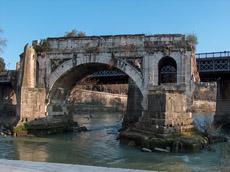This research project investigated projects of engineering and urban redesign in late sixteenth century Rome—flood control (of the Tiber River), aqueduct construction and repair, the construction of conduits and sewers, the repair of bridges, and the design and construction of streets. As it treated engineering and reconstruction in the physical city, it also considered visual representations of the city, most importantly in the form of maps. Such maps in various forms that depict both the ancient city and the contemporary, proliferated in the second half of the century. The chronological range of this study focuses on the period between the great flood of 1557 and the death of the great urbanizing pope Sixtus V in 1590—an approximately 30-year period sometimes referred to as early counter-reformation Rome.
This is a contextual history that is also informed by an interest in broader issues pertaining to the relationships between technical and engineering practices and the culture of knowledge. The mid-to-late sixteenth century was characterized by a growing number of what Pamela Long called “trading zones”—arenas in which substantive communication occurred between university-educated people and those trained in artisanal workshops or in other practical/technical venues. Long investigated the development of a kind of fluidity and openness to discussion concerning issues of construction and problems in engineering in which people from diverse backgrounds offered opinions, suggested alternatives, conversed and argued with one another, and produced relevant writings, drawings, and maps. What passed for “expertise” could vary from one situation to another, and was far more diverse than has been the case since the development of professionalism (and its requisite educational and licensing requirements) in modern times. Pamela Long suggested that such interchanges between and among individuals of both practical and learned individuals contributed to the development of empirical values and practices in Early Modern Europe.

